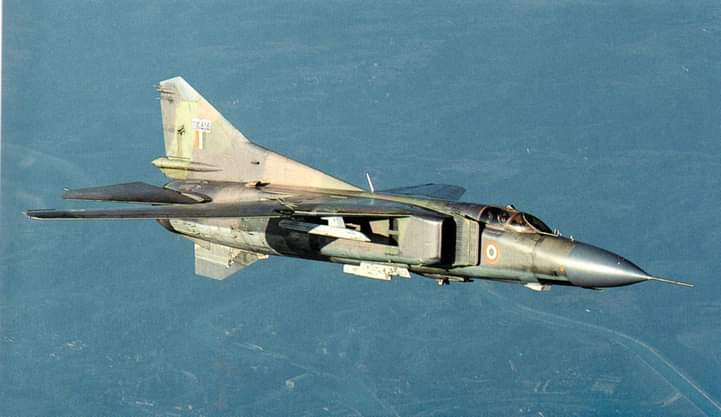MiG-23MF in IAF: Capability or Liability?
Cold War was an infamous period when rivalry between two superpowers, United States of America (USA) and United Soviet Socialists Republic (USSR) caused a lot of instances of escalations and de-escalations. The critical period of the competition was viewed as a constant threat to global peace and stability as both nations were trying to expand their influence beyond their territories. The foundation of North Atlantic Treaty Organization (NATO), and to rival it, the formal foundation of Warsaw Pact appeared as another warning for the world population that was still recovering from the losses of World War II. The political enmity also triggered an arms race, that led to rapid development in the field of military technology and tactics which would be employed to deal with opposition as well as counter it with much greater force. The aerospace field was one of the major wings of the armed forces to receive serious upgrade in the inventory, with transition from propeller driven combat aircraft, with machine guns, to jet engine equipped warplanes and eventually supersonic fighters with great maneuvering capability and new range of air-to-air and air-to-ground armament. Many examples were produced in mass scale and employed in arenas of limited scale conflicts to prove their versatility as well as promote their sales as there were scenarios when a system produced in the eastern bloc defeats some of the most sophisticated platform originated in the west.
India had the privilege to balance its relations with two superpowers by avoiding participating in any alliance. Being a founding member of Non-Aligned Movement (NAM), the South Asian nation was one of the few countries to express itself as per the interests of its own, unlike the nations who joined the conflict and had to follow the doctrine and principles set by the leading power. However, this did not mean New Delhi would be able to grab the best from both alliances, specially in terms of weapons. This took dramatic turns after Pakistan jointed CENtral Treaty Organization (CENTO) in 1955, a subsidiary of NATO dealing with countries in Middle East, though allowed nearby states to join. This led to establishment of closer ties between Islamabad and Washington, and enhancing the military co-operation including supply of high end US origin systems, like F-86 “Sabre:” and F-104 “Starfighter”. However, India on the other hand started moving closer to Soviets in this regard and managed to grab equally capable counterparts produced in West. Therefore, this laid foundation to a series of major deals focusing on addition of some of the most well promoted armament on the globe in Indian military inventory. The MiG-23 was also one of the examples to be backed by large scale of promotion and went through a extensive operational situation as well.
The MiG-23MF and origins
The successful sale and operationalization of MiG-21 “Fishbed” as a capable air defence fighter managed to maintain the status of Soviet weapons as highly competent technology to resist the enemy aggression in all form of airpower, proved with the performances in Vietnam War, Indo-Pak War, etc... Equipped with heat seeking missiles and turbojet engines with supersonic flight ability, the Fishbed was more or less the “ambassador” of Warsaw Pact’s excellency in offering proficient family of air-combat solutions. To further expand the reputation, a new fighter aircraft was required with enhanced technical ability and armament package to improve combat survivability. This caused the development of new top-of-the-line platform that would also cover the limitations faced by MiG-21 operators, like that of short range and limited weapons and radar range. The engineers at Mikoyan-Gurevich offered two concepts, where one added with two lift jets in the fuselage (“23-01”) while other with variable geometry wing (“23-11”)
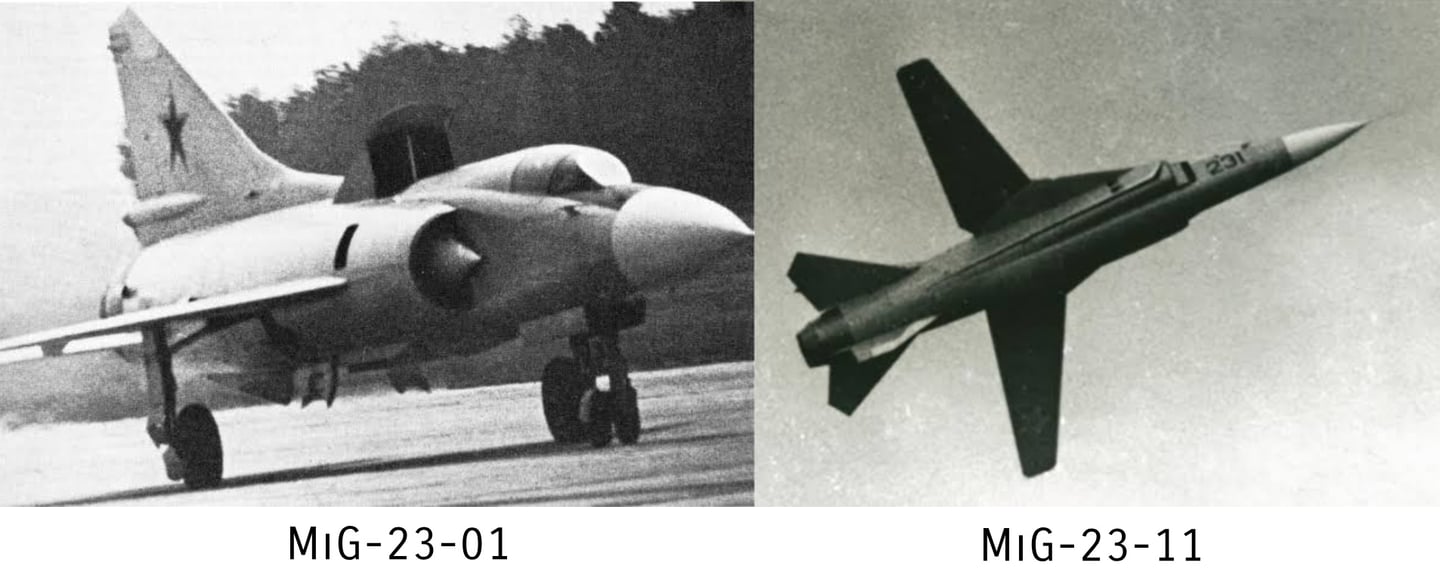

The flight trials carried out in 1967 saw the latter performing better than former in very aspects in performance and weight distribution and hence, was favored to be continued as primary design for MiG-23. Still a new concept at the period, the variable wing configuration was considered as the main highlight of the platform, with angles of sweep were 16, 45 and 72 degrees, that allowed it to optimize as per the requirements in terms of speed and agility. While F-111 was the analogous considered during MiG-23 development, the Soviets managed to design it as an airframe suitable to engage the adversary in close range dogfights.
The fighter went into series production after mulitple flight and combat trials, and was equipped with Phazotron RP-23 “Sapfir” air intercept radar specializing in look-down/shoot-down ability and compatibility with newly developed R-23 medium range air-to-air missile that would operate with Semi-Active Radar Homing (SARH) guidance tactics. A new InfraRed Search and Track (IRST) system was incorporated to increase within visual range combat potential. The R-27F2-300 turbojet engines were other features described as descent for the aircraft to operate. The success of the platform in fulfilling domestic requirements allowed Moscow to approach global market but for that, a dedicated variant needed to be produced, with many components either removed or replaced with downgraded substitutes, that would ensure that sensitive Soviet technology would remain within Soviet territory. Therefore, MiG-23MF, based on most produced variant MiG-23M, came into existence focusing on meeting the demands of Warsaw Pact countries as well as third world nations like India.
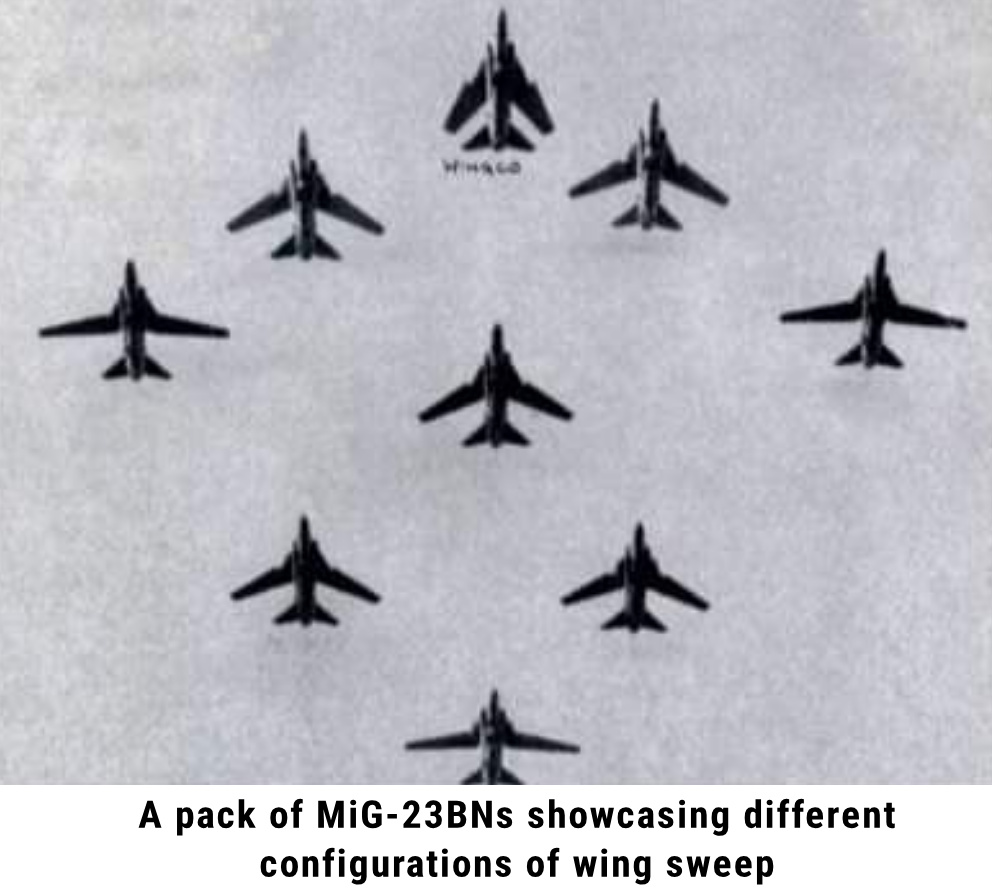

Now featuring downgraded RP-23E radar with nerfed performance, the new export-oriented Flogger was promoted as a successor of MiG-21 and showcased as a new solution for air defence with unmatched capability like in Beyond Visual Range (BVR). However, it still managed to perform as per the requirements set by Indian Air Force and we are going to mention five notable remarks on MiG-23 and their contribution in IAF doctrine:
1. Soviet's first offer against Pakistan's F-16
It was year 1981 when Pakistan and United States formally signed a deal for supply of 40 airframes of F-16 Block 15 to strengthen the PAF and its future operational requirements. Armed with state-of-the-art situational awareness package and modern offensive armament, it was the most sophisticated US origin light fighter of the time and no less than a marvel for the South Asian state. While officially it was assured that under the agreements listed under Foreign Military Sales (FMS) program, the platform would be primarily used against counter-insurgency operations and self defence measures, it still posed a serious threat for Indian military doctrine and a proper response needed to be prepared to counter the new Pakistani fighter jet.
It was Soviets who responded first and offered the MiG-23MF. In 1979, the IAF was involved in an evaluation program and the authorities were impressed with the aircraft's performance in terms of agility and combat capability. This led to a decision in which IAF agreed to purchase two squadrons of the platform. This was the very first attempt to counter the availability of F-16s in the west and field a proper new air defence fighter in service. Therefore, in 1982 the first MiG-23MF batch arrived as knocked down kits and later assembled at Ozar and eventually inducted in May 1982 with 223 "Tridents" squadron and in July 1983 with 224 "Warlords" squadron.
2. First to had...
The MiG-23's inception in the Indian subcontinent directly led to an advent of modern technology which were one of its kind. The aircraft was first to feature air-to-air missiles, officially designated for Beyond Visual Range (BVR) combat. The R-33 missile had max operational range upto 35 kilometers and it used the Semi Active Radar Homing (SARH) guidance method to target any airborne hostile platform. The Sapfir 23E air intercept radar was primary system that was linked with the missile and illuminated the target. The TP-23 was another highlight, that was an InfraRed Search and Track (IRST) and only few examples in the world were able to incorporate the system. It offered remarkable combat capacity in short range dogfights and allowed the operator to track any bogie without using radar. The systems like such were still not possessed by any airpower in the subcontinent, that allowed IAF to gain an edge wn edge over the adversary with "See First Shoot First" capability.
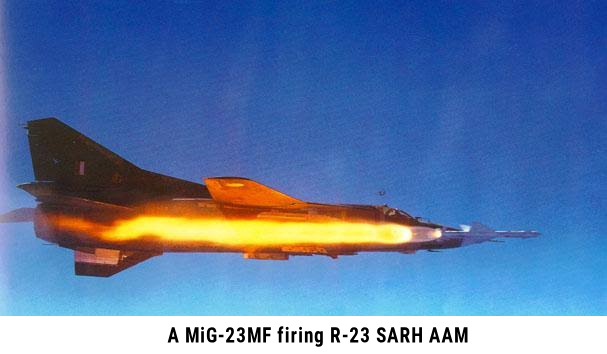

3. Siachen Primary Air Cover
Operation Meghdoot of 1984 was a sensitive point in terms of political relationship between India and Pakistan. Siachen Glacier is the largest glacier situated in the Karakoram ranges and stretches upto the length of 76 kilometers. Several attributes of the region make it strategically important both in offensive and defensive doctrines. Located at an altitude of 5,500 ft above the sea level, it is world’s highest battleground. Saltoro Ridge is one of the highly prominent point of the region. Any military holding control of the domain can act as a watchtower against both Pakistan and China. And therefore, it was utmost priority for New Delhi to takeover the disputed land to keep a close check on the activities of its prime adversaries. While the success of Meghdoot is often credited to the ground troops who managed to climb such extreme heights and established effective military installations in adverse situations, the airpower played an equally significant role in the conflict that was necessary to coordinate the missions under safe parameters. The airlifters carrying cargo and troops carried out regular sorties and close to the Pakistan border that made them vulnerable to enemy interceptors. Therefore, a proper air cover had to be given in order to avoid any mishap that might lead to failure of such critical mission.
Therefore, MiG-23 fleet was quickly dispatched and placed in the north to provide air cover and escort for the airlifters. While its debatable, but the employment of Rakshak with their day and night combat sorties in the battle zone were vital to suppress any action from Pakistan Air Force, who were still new with their Fighting Falcon F-16 and had no other challenge in the fleet against India’s swing wing fighter.
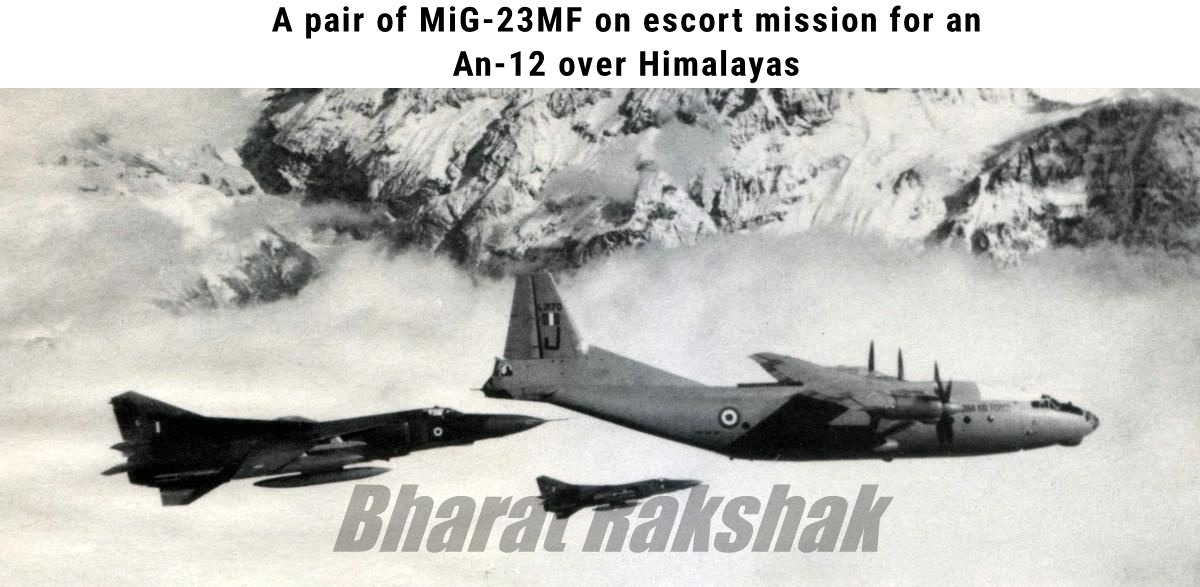

4. THOISE milestone
The northern India accommodates a highly diverse culture and wide range of examples that reflects the beauty of nature, the region's significance in terms of the strategic implication is equally important. Since 1947, the western borders of Kashmir and Punjab have seen several confrontations and standoffs against Pakistan, making them most vulnerable points to face enemy aggression. In order to strengthen the domain's security and protect the interests of the state, several action plans were established, and many are still going and planned for future to further reinforce the installation. Military installations like THOISE airfield are considered as one of the most important assets that provides accommodation facility of multiple services, but also allows safe regulation of troops and infantry the region. Stands for "Transit Halt Of Indian Soldiers Enroute", the airfield is in a Shyok valley (due to river Shyok) North of Leh at an altitude of 10059 ft. Between 1986-1995, the location had witnessed several type of aircraft commencing successful landing even after the runway was short, 6050 ft to be precise. Airlifters like Il-76 "Gajraj", An-32 "Sutlej", C-82 "Packet" were able to precisely touch down on the runway with cargo and managed to provide necessary equipment and survival nourishments for security forces deployed in Siachen and nearby zones, especially after the Siachen conflict of 1984.
In the 90s, the high command finally decided to test fighter aircraft's ability to operate from the base and the first objective was to land the jet, withstanding several challenges posed by such altitude. In 1984, a MiG-23BN commanded by the then Group Captain Avinash Deodata Joshi had managed to land on Leh airfield. Months later, Thoise was selected to undertake trials involving fighter aircraft. The operation was a success and a MiG-23MF from 223 squadron successfully touched down on the runway and parked on the tarmac. The takeoff commenced later allowed the mission to be declared as a success and major milestone for the organization that is now capable to perform fighter missions from airfields situated at such altitude. The missions were accomplished only after long hours and days of preparations by personnel on ground as well as proper skill employment by pilots onboard. The collective work allowed Thoise to expand itself as more important base to shelter modern fighter aircraft and perform combat duties against encroachment by adversaries.
5. Kargil War
The list would be incomplete without discussing its invaluable role in Kargil skirmish, when most modern equipment in service with Indian Armed Forces were tested to their limits. From medium range artillery systems, multi-barrel rocket launchers to laser guided equipped warplanes, the Indian armed forces relied on some of the most state-of-the-art combat platforms to achieve the extraordinary task to win the battle occurring at such greater heights. The MiG-23MF was part of the assets fielded in combat during the conflict. Equipped with 500lb bombs, several strike missions were undetaken alongside Jaguar, MiG-23BN, MiG-27 and Mirage 2000 to annihilate the enemy fortifications scattered around the mountains. Interestingly, MiG-23 and MiG-27 had the highest number of sorties throughout the conflict that were fruitful to harass the intruders occupying positions with an height advantage over Indian ground troops.
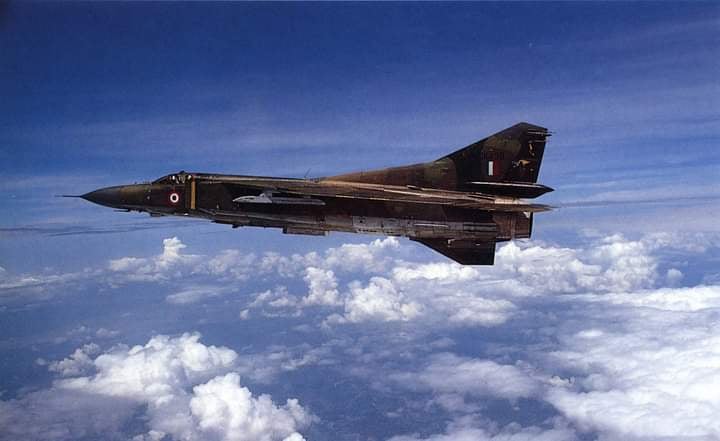

So where is the controversy?
The controversy lies in the platform’s quality and quantity. The MiG-23 purchase was one of the examples of India’s interim procurement, that focuses on solving the problem temporarily before having an effective solution. As already mentioned, the MiG-23 was basically added in inventory of IAF to counter Pakistan’s acquisition of F-16. Though widely promoted, the aircraft still had problem and the operators had to face a lot of limitations while operating the machine. The engine of the aircraft was under constant threat of tearing apart due to durability issues. The structural issues further added in the burden of the ground crew who had to perform exhaustively after each sortie to make the aircraft fit to fly again. The technical restrictions had drastic effect on MiG-23’s combat effectiveness. The air intercept radar provided to third world countries were downgraded and did not offer the performance that Warsaw pact was enjoying with their units, disallowing the operator to use the BVR combat ability to full potential. However, a field was there where every operator was facing issues and it was the turning capability in hot engagements, that was unacceptable for a platform officially classified as “better” air defence fighter and not a attack or strike aircraft. Another factor acting as the root of all controversies was the number of airframes acquired. Only two squadrons of MiG-23MF were procured. This showed the lack of trust of IAF since the beginning on the system as in past the organization had purchased many examples of Soviet made platforms in bulk, including MiG-21, Su-7, etc... Soon enough, India progressed to invest in 40 airframes of MiG-29 in 1986, that was new and advanced in that period. The deal was justified in the context of countering PAF F-16, giving rise to new questions seeking answer whether the MiG-23 fulfilled this demand or not.

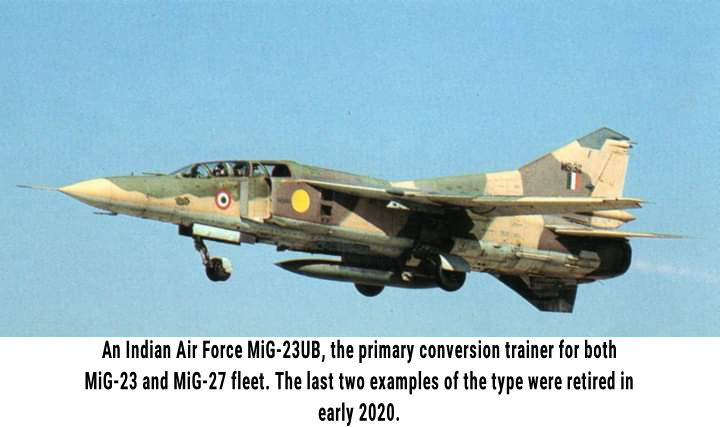
Their service time was also noticeable. The first Hawker Hunter was procured in 1958 and last of the airframes were retired in 2000, the first MiG-21FL was purchased in 1963 while last airframe was phased out in 2013. Serving for 42 years and 50 years respectively, both the examples reflect the IAF long history associated with system it has inducted till date. The MiG-23MF did not have such privilege. Short service period of only 25 years (1982-2007) displays how much burden it had on the airforce. The lack of adequate spares and high maintenance costs forced the IAF to retire the aircraft, while the strike variant MiG-23BN retired two years later. This was another possible indication of its lack of availability specially since IAF started relying on more modern fighters like Mirage 2000 and MiG-29.
Conclusion
A lot of factors affect the combat record of any fighter and influence its future combat availability. This is like the case of MiG-23 in IAF where it had to face several limitations but remained as frontline fighter in many instances. While it is no more service and therefore, no more limitations are faced, the aircraft’s contribution in guarding the airspace of India should not go undervalued. But at the same time, the burden associated with the jet in terms of high costs involved in operation and the incapability to deal with primary threat, F-16, needs to be addressed that would be essential for the high administration to realize the mistakes committed during the procurement of the platform, so that no similar mistakes will happen in future.

